For every action there is an equal and opposite reaction – and sometimes, more than that.
Ford recently began offering a new V8 in its heavy-duty pickup, the F250 – which I’m test driving this week and will be publishing a review of shortly.
It is a huge V8 – 7.3 liters – which amounts to 445 cubic inches, a gigantosaur of internal combustion the likes of which hasn’t been seen in years, chiefly because of the pressure coming from the Washington regulatory apparat to make them smaller and smaller for the sake of higher ad higher gas mileage . . . if they’re even made at all.
Ford’s lighter-duty pick-up, the F-150 (reviewed here) comes standard with a little 3.3 liter V6 and offers several small V6s (2.7, 3.5 liters) as options. There’s only one little V8 (5 liters) available, if you’re very persistent as many dealers don’t stock them. There is also a diesel V6, but it’s not especially economical – and its very expensive to buy, making the buying of it a harder sell.
Same issue with the diesel V8s in the heavy-duty stuff. They are tremendously capable – and also immensely powerful. The 6.7 liter turbodiesel V8 that’s optional in the F250 produces an almost surreal 1,050 ft.-lbs. of torque, enough to pull a house off its foundation.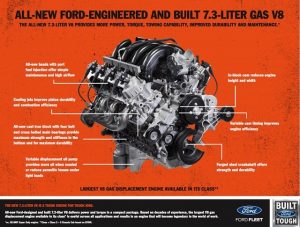
But the thing is almost as surreally expensive and it is no longer what diesels used to be to compensate for this:
Mechanically simpler than gas engines – with fewer if any emissions controls.
That lasted longer than gas engines.
The new diesels have almost as many emissions controls as gas engines and different, more complex ones, too – including particulate traps and DEF – Diesel Exhaust Fluid – which means a special tank in addition to the fuel tank that must be periodically topped off with DEF, the fluid sprayed into the exhaust to alter the chemical composition of the resultant exhaust gasses. It is the diesel engine equivalent of a gas engine’s catalytic converter(s) with the difference being catalytic converters are maintenance-free and only cost you when they need to be replaced, usually many years down the road.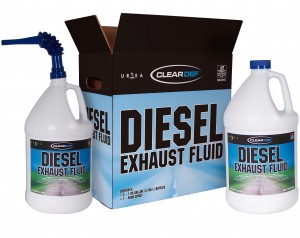
But DEF is a regular expense as well as a regular hassle. If you let the DEF tank run dry, the engine’s controlling software will eventually cause the engine to stop running altogether until you top off the tank.
There is also the roughly 50 cents extra per gallon you pya for diesel vs. gas, which adds up fast when you’re filling a 48 gallon tank, as is available in a big truck like the F250. To be precise, it adds about $20 to the cost of every fill-up and while it’s true the diesel goes farther on a gallon, it’s not as far as it used to go – and you pay through the nose for every mile, in addition to what you paid up front, which is in the range of $4,000 for a diesel in a light truck to an astounding $10,495 for the F250’s available 6.7 liter Powerstroke turbodiesel V8.
One used to be able to buy a whole truck for that sum.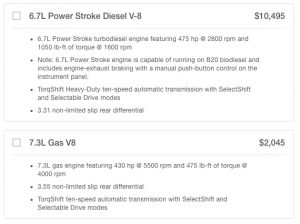
These factors have made diesel engines less attractive to buyers than they used to be – and prompted a resurgence in V8s as they used to be.
The Ford 7.3 liter V8 is not only gigantic – it is just shy of being as big as the biggest block V8s ever put in any classic-era muscle car (my 1976 Trans Am has a 7.5 liter, 455 cubic inch V8, the biggest V8 GM ever put in any muscle car) it is also very much like the big V8s American car companies used to regularly offer . . . and not just in trucks.
It is not overhead cammed, as almost all modern V8s are (with the notable exception of the Hemi series of V8s still sold by Chrysler, Dodge, Ram and Jeep). It is overhead valve. And just two valves (not four) per cylinder.
Simple.
And powerful. While the 7.3 doesn’t make 1,050 ft.-lbs. of torque, it does make 475 ft.-lbs. (as well as 430 horsepower) and that’s comparable to what simpler-but-no-longer-made truck diesels used to make and for a lot less money up front – and down the road. The 7.3 liter option lists for $2,050 – and it doesn’t come with a DEF tank or cost you 50 cents extra at every fill-up, either. 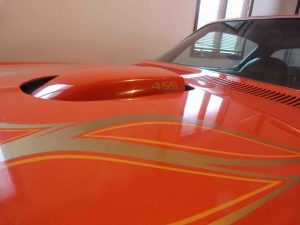
It may even last longer, given that it is simpler than the almost-$11k diesel. Fewer parts, fewer things that might break. Including, for one, the turbo – which it doesn’t have. And as for more power, the $8k up front you didn’t spend could probably get you a lot closer to 1,050 horsepower (as by adding a turbo) without having to deal with DEF or pay the extra 50 cents per gallon, ongoing.
Now if only they offered this unit in a Mustang.
. . . .
Got a question about cars, Libertarian politics – or anything else? Click on the “ask Eric” link and send ’em in!
If you like what you’ve found here please consider supporting EPautos.
We depend on you to keep the wheels turning!
Our donate button is here.
If you prefer not to use PayPal, our mailing address is:
EPautos
721 Hummingbird Lane SE
Copper Hill, VA 24079
PS: Get an EPautos magnet or sticker or coaster in return for a $20 or more one-time donation or a $10 or more monthly recurring donation. (Please be sure to tell us you want a magnet or sticker or coaster – and also, provide an address, so we know where to mail the thing!)
My eBook about car buying (new and used) is also available for your favorite price – free! Click here. If that fails, email me at EPeters952@yahoo.com and I will send you a copy directly!


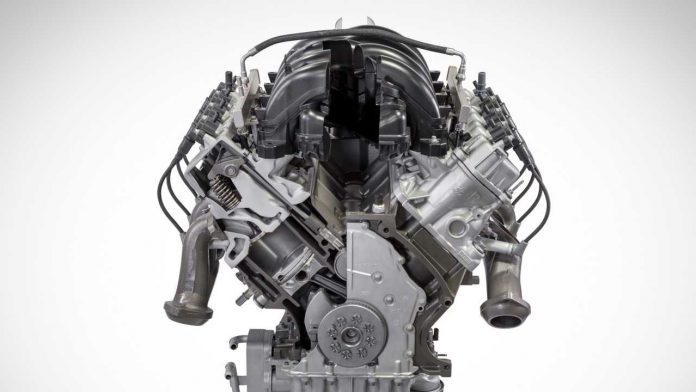









I just LOVE how Ford advertises this new V8 engine as having “state of the art” technology that’s been in use for, oh, I don’t know, 20+ years now?! lol I mean, DUH! Aren’t engines SUPPOSED to be relatively simple AND reliable? GovCorp be damned!
Hi Blue,
More like 60 years! The first modern OHV V8s with light casting blocks and heads, etc.appeared circa 1955. If the 7.3 had a big four barrel on top, it’d be very close to what was available a long time ago!
I was actually referring to the port fuel injection and variable valve timing, etc. Or were THOSE also available 60 years ago? Other than that, the rest of the block could’ve indeed come from that era. But I guess I can only speak for what I grew up with in the late 90’s-early 2000’s. lol
Hi Blue,
I once owned a ’69 VW with Bosch injection, but it was very uncommon and no one – that I recall – offered variable valve/cam timing 60 years ago! Still, the general layout of the 7.3 is not-too-distant from 60 years ago; the chief difference (mechanically) is how much air these modern engines flow. That is the key to their astounding – by historical standards – output.
My Trans-Am’s 455 probably makes about 320 hp. Pathetic – by modern standards – out of an engine that is 7.5 liters in displacement. With the stock/factory heads, I might get 400-something out of it before it starts to get too hairy to be a street-driven car.
The Ford 7.3 makes 430 hp without even trying.
That F-250 looks like a real nice truck, and that engine looks like a beast. My only concern is, has Ford eliminated the death wobble in their F-250 series and F-350 series trucks?
With Technology I know the big v8 will be dope. Thank You for sharing!
Although on paper my VW T6 Diesel is only a little better on fuel usage, in real life driving the difference is very noticable. And it’s even better now as well as more drivable since I removed the DPF, DEF system and blocked the EGR. After this Covid scam, I don’t feel at all guilty. Fuck ’em. They can wear a mask.
“It is not overhead cammed, as almost all modern V8s are (with the notable exception of the Hemi series of V8s still sold by Chrysler, Dodge, Ram and Jeep).”
I believe GM’s LS series of V8s in their trucks, SUVS, Camaro and Corvette are also still pushrod and not overhead cammed, correct?
Yes, the LS is a pushrod V8. I think OHC American V8s are the exception, not the rule.
So, I know we’re speaking of Ford here and not Chevy, but this is pretty much like an old 454 big block with some performance parts?
Would it even fit in the Mustang?
As I have said to many clients, “with enough time and money, anything is possible”.
But why would you anyway? There are already over the top powerful ones available.
>As I have said to many clients, “with enough time and money, anything is possible”.
Indeed…over the weekend, I ran across a video where the participants were doing an LS swap.
Into a Tesla Model 3.
🙂
Hi Rich,
The 7.3 is actually very compact for its size – OHV, donchaknow! The height might be an issue…but there are shaker scoops for that!
Figured since it was for a truck they wouldn’t really care if it was kind of big! Hopefully they will sell it as a crate engine, I bet it would be popular!
There is a new 6.8 in the works that will go in the F-150 and next-gen Mustang. I have no idea if it’s a pushrod or not.
The 15PPM sulfur rule is to protect the aftertreatment,same reason gas went unleaded to protect the catalytic convertor
Gas went unleaded as it was a crime of unimaginable magnitude to allow its use, causing much damage and misery. There are times when environmental rules are sensible, however they are trivialized by ridiculous measures for false reasons.
Note that when we started with the anti-carbon bullshit, pollution of other and actually problematic emissions went up. In the early nineties in my community they started dyno testing cars for inspection. Yea, it might have been extreme but as a trained chemist with a nose for stuff, i could tell that the traffic air improved massively highway and local. We actually reached a pinnacle of quality, clean burn, emissions and performance. A leading consumer magazine that hated cars at the time begrudgingly admitted that cars actually cleaned the air.
When the anti-carbon bullshit hit the dirt, it seemed almost perfectly timed with our switch to OBD port emission testing. You might find it odd, but the extremely sensitive and difficult dyno test would routinely have cars pass even though the damned check engine light was on and/or they had failure codes of numerous types. Now this was an issue with the crap brands in terms of the OBD and these failures. Well designed, quality cars did not have this issue.
Getting back to anti-carbon movement, i noticed over five short years that morning auto pollution went up massively in a community where people leased and traded in very early, so it was a great example of the changing fleet. Yet, these cars now managed to keep their check engine lights off and pass OBD testing.
The manufacturers are playing games to show lower fuel use during testing which is the only control on carbon emissions.
In the carbon reduction scam, we took a step backwards.
It is kind of a shame. It was fun to see quality vehicles which were way more than ten years old pass the dyno no problem, sometimes with really delayed tune-ups or oil changes. The latter could actually affect the test result. There were a lot of brand new vehicles that failed repeatedly from manufacturers known as expensive crap and other shitboxes. This scared a lot into stopping the games
The real problem is that we stopped basing our rules on logic. Denser urban areas probably need to be more compliant, yet we allowed unregulated diesel while torturing gas car owners with serious economic ramifications to them. But then we take it too far. The diesel restriction are too onerous for the owner operators. Some stuff they had no problem implementing, but once again, lack of logic leading to politics and extremism.
Hey Eric, is that Ford 7.3 DI or port injection? I think I see a rail and set of injectors per bank, and they look like they’re set in the intake ports on the heads. That would also make this new elephant mill desirable.
You are correct on the de-incentivization of Diesels. Even an electronically controlled pump-equipped Diesel from the late 90’s without EGR, cat, DPF, pipi injection, etc. will give you 250 Kmiles with ease. Nowadays? The DPFs need removal and cleaning/replacement usually before 100Kmiles, cooled EGGR gives havoc around then, etc., and that minimum $0.30 US/gal extra just kills the economic case too.
What ever became of that 1000+ horsepower Hell-ephant engine from FCA? And when do the lawyers figure out a way to put it into a Charger or something as a limited run ??
‘It is overhead valve. And just two valves (not four) per cylinder.’ — EP
Simple is good. But these specs give the appearance of deliberate derating, possibly for the sake of longer life.
After all, the now-ubiquitous 2-liter straight fours now regularly extract 100 horsepower per liter or more … usually with the aid of a turbo or two. Ford’s 7.3 liter V8 makes a little under 60 horsepower per liter.
It’s like a throwback to the big, loafing V8s of a half century ago. That’s not all bad. But as Chris said, no way an engine with such low output per liter is going into cars or even half ton trucks.
It’s going to be a sad day when Eric publishes ‘The Last V8.’
Think they’re working on a 6.8 aluminum variant down the line, chief.
Dont quote me on it, haven’t paid much attention, but still just a heads up.
That and they got into 4 digits with a supercharger, Godzilla there can make big power!
Hi Jim,
This engine – like the Chrysler 5.7 – has enormous untapped potential. In 430 hp trim, it’s totally docile…and that’s 430 hp!I bet with a mild cam and some tuning it could make 600-plus and still be totally docile…
Hi Eric,
Curious about the mpg. My ’94 460 rarely gets better than 8 mpg.
Eric, could you do a technical comparison between this and the GM 6.6 and Ram 6.4? Thanks
No way that 7.3 is going in cars or even half tons.
I wonder why regulators wanted to kill off the diesel so bad? It just doesn’t make sense what they did with Tier 3 then Tier 4 standards, and reducing sulfur content to practically nothing.
“Before EPA began regulating sulfur in diesel, diesel fuel contained as much as 5,000 parts per million (ppm) of sulfur. EPA began regulating diesel fuel sulfur levels in 1993. Beginning in 2006, EPA began to phase-in more stringent regulations to lower the amount of sulfur in diesel fuel to 15 ppm” epa.
Maybe EV lobbyists are behind the diesel witch hunt. I seem to recall that Subaru refused to work toward EV models because they foresaw the environmental devastation that comes with mass disposing of batteries. They opted to go diesel instead.
Why are Big Gov’s so set on ditching diesel, and soon gasoline?
One word: CONTROL.
Of you, and everyone and everything else.
Why do think the huge push to electric?
Limited range, high expense, the list of negative goes on and on.
Eric has discussed this in-depth many times.
Control of your mobility, what you can carry, how far you can go and how quickly you get there, etc.
If you think 2020 was an appetizer, brace yourself for 2021-2024, its going to be the main course.
And all of us great unwashed deplorables are the elites menu as the principle entre.